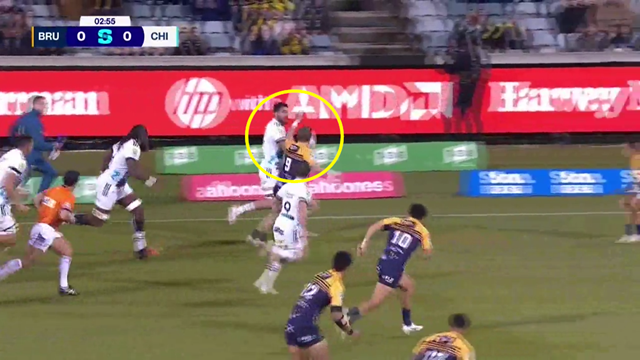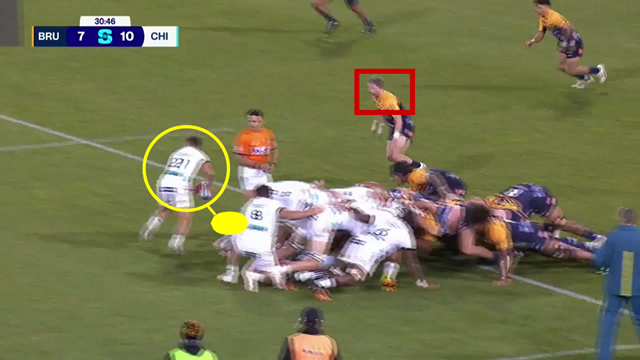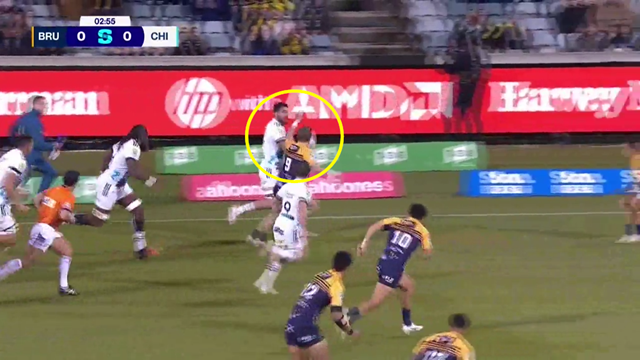How quickly times change, and how quickly changes move on and gather pace once they are recognized! It is only a matter of weeks since I penned this article for The Rugby Site Need for Speed.
At the beginning of that piece, I observed the response from Kiwi Super Rugby Pacific coaches to the new trial laws requiring the scrum-half to retire at defensive scrums, rather than move forward and ‘chase to the base’:
“[Hurricane back-rower Peter] Lakai is typical of a growing trend in number 8 selection – or more accurately, the coaching view of what qualities are needed at the base of offensive scrums, regardless of the number on the jersey. In recent weeks, other natural flankers like Dalton Papali’i and Hugh Renton have been observed packing down at the back of the attacking set-piece.”
“…With the half-back out of play, there is a premium on an attacking eighth man who can quickly clear the screen of opposing loose forwards, and that means acceleration and speed into his running, rather than pure size and power.”
The article went on to illustrate how quick number 8’s, like Hugh Renton for the Highlanders and Ben Earl for Saracens in the U.K, could run a wider arc to the natural side (their right) from the base of the scrum, outflank the screen of defending loose forwards and successfully engage the scrum-half further downfield.
No more than a month has passed, and already there have been further developments. They were clearly in evidence during the crunch round 14 match between the top team in New Zealand (the Chiefs) and their counterparts in Australia (the Brumbies) at the GIO Stadium in Canberra.
The Chiefs selected a quicker number 8 with superior footballing skills (Luke Jacobson) at the base, shifting their more powerful ball-carrier (Pita-Gus Sowakula) to the side of the set-piece. In previous, pre-law trial seasons it has been the other way around.
Jacobson showcased some of the new possibilities as early as the 3rd minute of the game:
https://youtu.be/ib0zezIOvMA?t=20
It looks very much as if the Chiefs have an ‘8-9 right’ move planned as Brad Weber begins to widen out beyond Jacobson, but a powerful drive by the Brumbies’ scrum on that side puts paid to those thoughts. If the defensive scrum-half was still allowed to ‘chase to the base’ in this scenario, Jacobson would probably be sacked for negative yardage, well behind the gain-line.
The new requirement allows him to pick up and go left, and make a very nice silk purse indeed out of the pig’s ear of a broken play. With the Brumbies’ right wing (#14 Andy Muirhead) defending in the backfield against the kick, the home scrum-half (#9 Ryan Lonergan) is manning the short-side, but he is not in position to tackle Jacobson until play has moved at least ten more metres further downfield:

The dummy pass takes both men out of the equation and Jacobson’s speed does the rest for an outstanding individual try.
The revelation that pick-ups going left are now just as viable as those moving in the other direction was reinforced later in the half:
<p

Lonergan again drops back behind the last foot on defence, and this allows the Chiefs to use ‘channel one’ ball, emerging from underneath their left flanker’s feet, to launch their own strong-running halfback (Cortez Ratima) successfully off the base. The Brumbies #7 cannot make the tackle on Ratima and he is only stopped 10 metres further downfield by his opposite number.
Other instances from the game supported the lesson from the earlier article. They showed how hard it is to stop the pick-up going right with the defensive back-row out of play on a wider arc:
In both of these examples, two backs (the Brumbies’ #9 Lonergan and #10 Noah Lolesio in the first instance, and #21 Klayton Thorn and #11 Corey Toole in the second) are the first tacklers to make contact with a wide-ranging number 8 forward, rather than a defending back-rower. If the ball-carrier has quickness and ‘good feet’, it is a mismatch and he is in A1 position to make meaningful inroads.
Summary
The new law-trial requiring the defending scrum-half to drop back rather than chase up beyond the mid-point of the set-piece are having more of an impact than even the law-makers may have envisaged. It is helping to revive the use of the scrum as an attacking weapon significantly, by encouraging quicker number 8 forwards to pick up right or left under no duress at the base.
Both channel one (left) and channel two (right) are equally viable, and both #8 and #9 can be utilized as the focal point of attack. There is a good chance that the outcome will be a forward versus a back, with first contact made only 5-10 metres downfield. We can only hope that the trial will be consolidated into worldwide law in due course, because it is one of the best ideas to promote attacking rugby in recent times.













.jpg)

.jpg)






